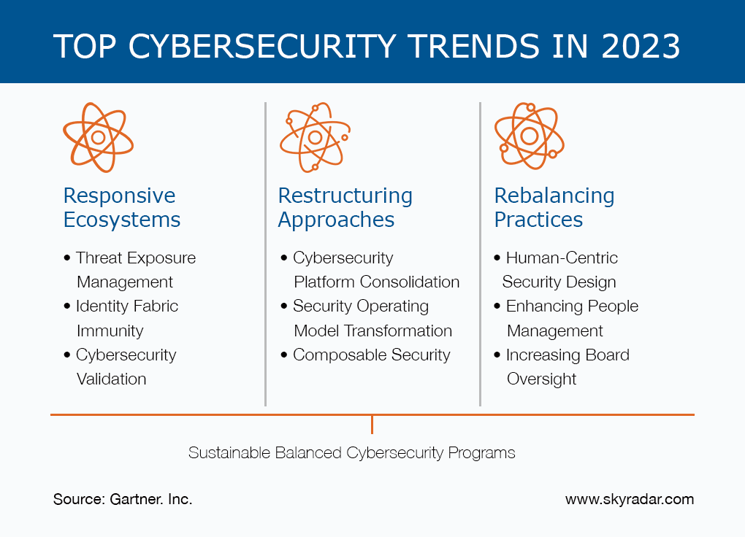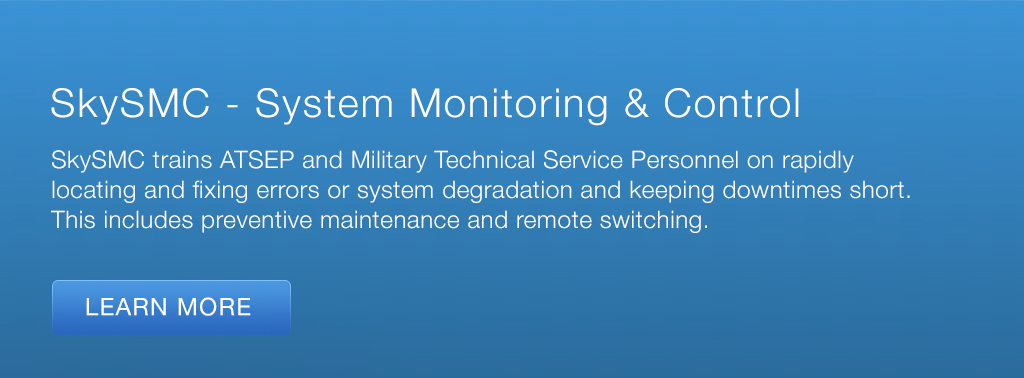This article explores the general transformation of cybersecurity, shifting from conventional infrastructure to a human-centric approach. Applied to Air Traffic Management these new trends are catering to ATM and the role of Air Traffic Safety Electronic Personnel (ATSEP).
Over the span of the past three years, the realm of cybersecurity in industry has embarked on a transformative journey, transitioning from a traditional infrastructure approach to a more dynamic and human-centered focus. This evolution can be traced through a comparative analysis of Gartner's Security and Risk Management trends from 2021 to 2023.
We followed these trends and shed light in its implications of the ATM sector. For ATM, this journey reflects the aviation sector's need to respond to an ever-changing threat landscape while adapting to the demands of a digitally interconnected airspace.
2021-2022 -Turning to Digitized Processes and Consolidated Infrastructure
The turning point emerged in 2021 when industry, and the aviation industry in particular confronted the accelerating shift toward digitized processes amid the pandemic. This shift highlighted the need for cybersecurity meshes to manage the complexities of decentralized structures and interconnections within ATM systems.
As the foundation laid in 2021 paved the way, 2022 witnessed a phase of consolidation. Decentralized structures, expansive attack surfaces, and intricate interdependencies spurred the adoption of holistic security approaches. Identity Threat Detection and Response systems came to the forefront, demonstrating a proactive stride towards anticipating and managing emerging threats.
Responsive and Human-Centric Cybersecurity in 2023
As the evolution reaches 2023, Gartner's insights spotlight a general paradigm shift towards human-centric security. The trends for this year accentuate the significance of harmonizing technology, system architecture, and the human element. For ATM, this means that from Identity Fabric Immunity to Human-Centric Security Design, the focus expands to empower ATSEP (and IT) professionals, integrate behavioral sciences, and foster a culture of vigilant adherence to security protocols.
This transformation echoes the industry's realization that cybersecurity is more than just technology—it's a synergy of systems, structures, and the expertise of individuals. In the intricate tapestry of ATM, security is no longer confined to machines; it encapsulates people, processes, and governance.
Technology on the other hand is modular, composable, and dynamically adaptable to changing requirements.
2023's Cybersecurity in Detail
Responsive Ecosystems
Responsive Ecosystems trends focus on continuous threat management and cybersecurity validation, essential for maintaining resilient air traffic systems.
- Threat Exposure Management: This pragmatic approach continually hones cybersecurity optimization priorities, bridging gaps in threat exposure awareness and readiness within air traffic management systems.
- Identity Fabric Immunity: Applying the concept of a digital immune system, this trend integrates development, operations, automation, software design, and analytics to proactively safeguard identity ecosystems in air traffic management, enhancing aviation operations.
A digital immune system, endorsed by IT experts at Gartner, embraces practices and technologies such as development, operations, automation, software design, and analytics. This amalgamation fosters proactive protection of identity systems in air traffic management, enhancing operational resilience. This section is not so easy. You may want to read more. - Cybersecurity Validation: By merging techniques and processes, this trend ensures that potential attack scenarios are rigorously tested against identified threat exposures, enhancing response preparedness and system resilience.
Restructuring Approaches
Restructuring Approaches trends advocate for simplicity and comprehensive coverage, vital for managing the complexity of modern air traffic systems.
- Cybersecurity Platform Consolidation: Streamlining operations through consolidation of platforms reduces complexity, increases operational efficiency, and offers a unified approach to managing security across ATSEP systems.
- Security Operating Model Transformation: The transformation of security operating models empowers rapid decision-making and risk management, extending analytical capabilities to efficiently address evolving threats in air traffic management.
- Composable Security: Integrating cybersecurity controls at a modular level within composable technology implementations ensures agile protection, safeguarding changing business processes inherent in air traffic management.
Rebalancing Practices
Rebalancing Practices trends underscore the significance of personnel, process, and governance in fostering a culture of cybersecurity in air traffic management.
- Human-Centric Security Design: Recognizing the pivotal role of personnel, this trend prioritizes employee experience and behavioral sciences, minimizing risky behavior and enhancing adherence to security protocols within the ATSEP workforce.
- Enhancing People Management: Elevating people management strategies among ATSEP professionals enhances functional and technical maturity, fostering talent retention, and promoting proactive security practices.
- Increasing Board Oversight: Emphasizing board-level accountability, this trend mandates cybersecurity expertise among board members, ensuring governance and strategic decision-making align with the aviation sector's security imperatives.
According to Richard Addiscott, Senior Director Analyst at Gartner, "Security and risk management leaders must rethink their balance of investments across technology, structural, and human-centric elements."
By embracing these trends, the ATSEP work profile in air traffic management can effectively navigate the complex cybersecurity landscape, ensuring the safety, integrity, and continuity of critical aviation systems.
The Takeaways for ATSEP
In embracing these trends, ATM's cyber landscape is poised to address the complexities posed by an evolving threat environment while embracing the digital nature of modern aviation. This evolution aligns with Gartner Senior Director Analyst Richard Addiscott's insight, urging security and risk management leaders to recalibrate their investments across technology, structure, and the human-centric dimension.
As ATSEP professionals and aviation stakeholders adapt to these trends, the sector ensures the steadfast integrity, continuous functionality, and safety of critical airspace systems.





